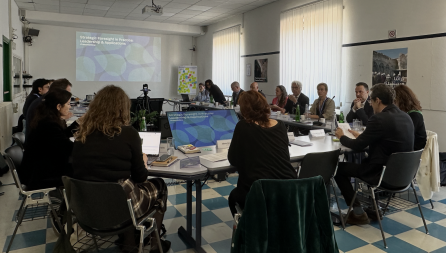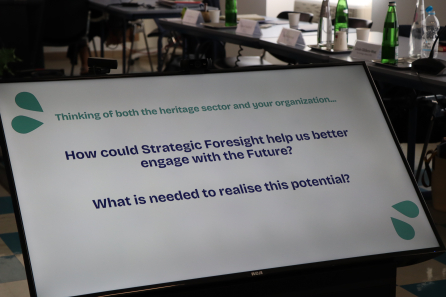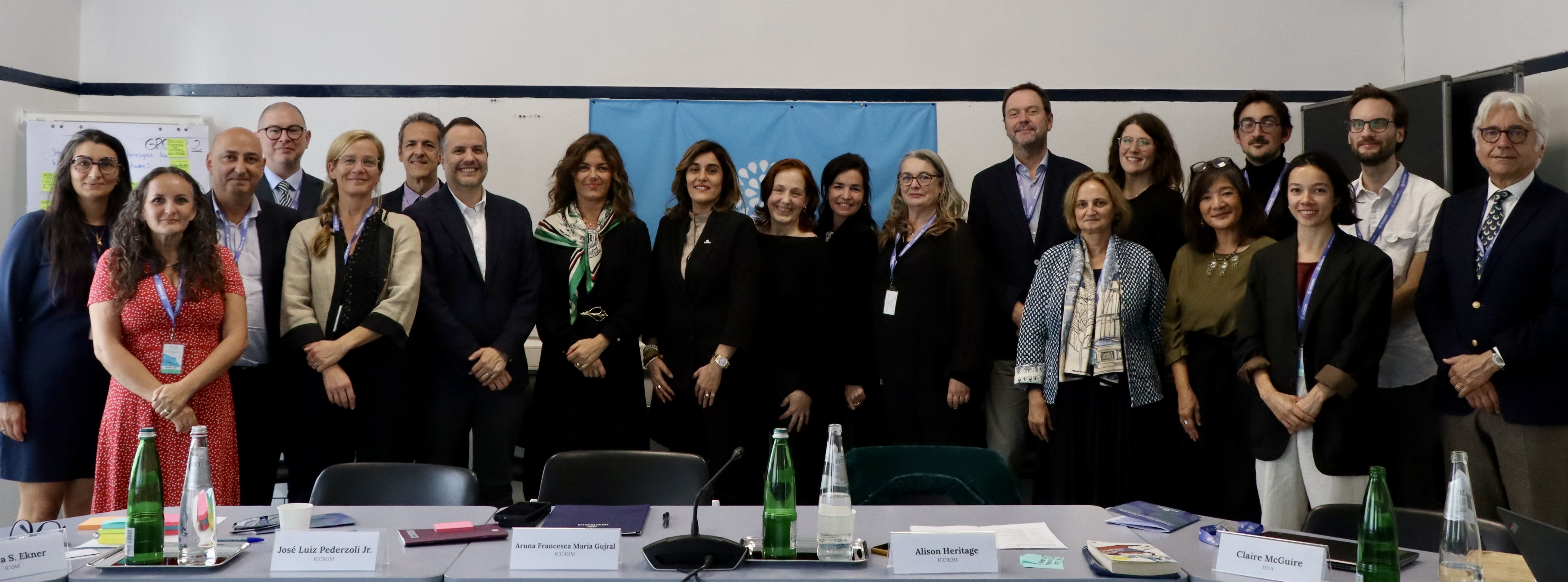How can the heritage sector better anticipate change, rather than simply react to it?
This question guided a dynamic gathering of international heritage leaders at ICCROM’s headquarters in Rome for the Strategic Foresight Workshop: “Anticipating Change – Exploring Long-term Futures for Heritage”. The one-day event provided an engaging forum to examine how Strategic Foresight can strengthen the relevance, resilience, and agency of heritage organizations amid accelerating global change.
Participants concluded the day with strong enthusiasm to continue the conversation, highlighting the need to strengthen foresight capacity across the heritage field and address existing gaps in shared tools, coordinated action, and collective learning.
Organizations joining ICCROM for the workshop included the International Council on Archives, ICOM (International Council of Museums), IFLA (International Federation of Library Associations and Institutions), NEMO (Network of European Museum Organizations), UNESCO, the French Ministry of Culture, the Swedish National Heritage Board, the Heritage Alliance, the Fondation des Sciences du Patrimoine, the Getty Foundation, and University College London.
Exploring the Power of Foresight in Heritage
Strategic foresight is not about predicting the future, but about challenging our assumptions – so we can prepare more effectively for what lies ahead. This approach holds particular relevance for heritage practice, which is fundamentally concerned with safeguarding heritage for the benefit of current and future generations. By using foresight, organizations can explore multiple possible futures, identify emerging trends and uncertainties, and make better-informed decisions today. While foresight is well established in sectors such as innovation, policy, and sustainable development, it remains relatively new to the heritage field – despite heritage’s intrinsic link to the future.
Recognizing this gap, ICCROM launched its Strategic Foresight Initiative in 2021 to challenge “business as usual” thinking and systematically encourage long-term thinking and “future-ready” planning across the sector. Building on this work, ICCROM’s new Strategic Directions 2026–2031 advance a mandate for greater anticipation across the heritage sector. In line with this, the October workshop looked to strengthen the practice of foresight within heritage by connecting institutions interested in advancing this emerging field.
A Day of Discovery and Dialogue
The workshop combined framing presentations, interactive foresight exercises, and open discussions that encouraged participants to exchange experiences and reflect on what the future might hold for heritage.
Morning sessions introduced the fundamentals of foresight and key insights from preparatory interviews, highlighting both opportunities and barriers to long-term thinking in the heritage sector. Using tools such as the Futures Wheel, participants explored the ripple effects of emerging trends and their implications for cultural heritage.
In the afternoon, discussions shifted to practical application – how foresight can be embedded in organizational planning to enhance resilience, creativity, and leadership in times of change.
Building Momentum and Shared Purpose
The workshop created a vibrant and collegial space where participants could experiment, challenge assumptions, and identify opportunities for collaboration. A key insight that emergedwas that while foresight is being practiced in some heritage institutions, these efforts remain fragmented. Participants agreed on the need to build a more connected and coordinated foresight ecosystem for the heritage sector.
As the event wrapped up, participants expressed a strong commitment to continue the exchange and collaborate on developing practical tools and shared frameworks. There was clear momentum towards establishing a Community of Practice on Strategic Foresight for Heritage – a peer network for ongoing exchange, learning, and joint experimentation to shape the field’s collective future.
Noting the lack of foresight resources tailored for application in heritage, a key aim will be to develop new heritage-friendly tools such as ICCROM's interactive Heritage Driver Cards.
A Practical Tool for Looking Ahead
Picture 30 years from now: how might future political, socioeconomic, or environmental shifts affect heritage – and how might heritage, in turn, influence those changes? Will societal values be different? How can we ensure that our strategies anticipate these changes, rather than simply project today’s values forward?
Integrating ICCROM’s Heritage Driver Cards into heritage work facilitates discussion around these key drivers of change. The cards provide a tangible way to explore how global forces might shape heritage futures, encouraging participants to connect global trends to their own institutional realities.
These Heritage Driver Cards are available as a free, open-access resource to help other heritage professionals and organizations run their own foresight workshops. They offer a practical entry point for those looking to strengthen strategic thinking and foster a culture of anticipation and innovation in their work.
What’s Next
Building on the ideas and energy generated during the workshop, ICCROM plans to support the creation of a Heritage Foresight Community of Practice. This space will serve as both a think tank for research and reflection, and a do tank for experimentation and practical application.
Its goals include:
Connecting and amplifying foresight and innovation efforts across the heritage sector.
Co-developing and testing foresight methods in real-world heritage contexts.
Building an open repository of trends, tools, and insights tailored to the sector’s needs.
The workshop marked an important step towards a more forward-looking and connected heritage community – one that not only safeguards the past but also actively engages with the future.
Do you have questions or suggestions regarding the foresight approach? You can write to us at foresight@iccrom.org.



